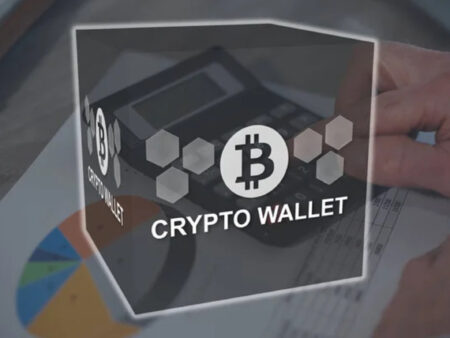Understanding the Binance Wallet: Features and Functionality

The Binance Wallet serves as a digital wallet specifically designed for storing, managing, and transacting various cryptocurrencies. It provides users with an array of features that enhance the overall crypto experience. One of the most notable functionalities is its support for a wide range of cryptocurrencies, allowing users to manage multiple assets conveniently in one place.
Another significant feature is its integration with the Binance ecosystem. Users can easily transition between trading on the Binance exchange and managing their assets within the wallet. This seamless integration offers a user-friendly experience and reduces the friction often associated with transferring assets between wallets and exchanges.
Moreover, the wallet includes advanced security features such as biometric logins, two-factor authentication, and a seed phrase recovery option. These tools ensure that users can protect their digital assets against unauthorized access, adding a vital layer of security to their cryptocurrency transactions.
Additionally, the Binance Wallet includes built-in tools for tracking cryptocurrency market trends and price movements. This feature allows users to stay informed about their investments directly through the wallet interface, without the need for additional applications or services.
Another appealing aspect of the Binance Wallet is its user-friendly interface. Even for those who are new to cryptocurrency, the wallet’s design is intuitive, making it easier to navigate. This accessibility helps demystify the world of digital assets and encourages broader participation.
Finally, Binance Wallet supports decentralized applications (dApps), enabling users to interact with various blockchain platforms directly. This feature opens the door for users to engage in activities such as gaming, decentralized finance (DeFi), and non-fungible tokens (NFTs) all from a single application.
The Relationship Between Binance Wallet and Binance Account

To fully comprehend the usage of the Binance Wallet, it is essential to clarify its relationship with a Binance Account. A Binance Account is primarily linked to the Binance exchange platform, where users can trade cryptocurrencies, access various financial products, and utilize advanced trading features.
Conversely, the Binance Wallet is designed to function as a standalone digital wallet, allowing users to store and manage their cryptocurrencies securely. While these two entities are interconnected, they serve distinct purposes within the Binance ecosystem.
When a user creates a Binance Account, they automatically gain access to the Binance Wallet. However, this access is not the only way to use the wallet; it has its own unique functionalities that can be appreciated independently of an account.
For users who do not wish to engage in trading on the exchange, the wallet can still be a valuable tool for managing assets. This flexibility is particularly appealing for individuals who prioritize security and control over their digital assets without the complexities of trading.
However, the wallet’s integration with the Binance exchange does present certain conveniences. For example, users can instantly transfer funds to their trading account without the need for additional steps or third-party wallets. This capability enhances the overall user experience and fosters a more fluid cryptocurrency management process.
Ultimately, understanding the relationship between the Binance Wallet and a Binance Account enables users to make informed decisions about how they wish to engage with their digital assets, whether through trading or simply safekeeping.
Can You Access Binance Wallet Without an Account?

The short answer to whether you can use the Binance Wallet without a Binance Account is yes. The Binance Wallet is designed to allow users to create and manage their wallets independently. This means that you can use the wallet to receive, store, and send cryptocurrencies without needing to have a Binance exchange account.
To start using the Binance Wallet without an account, users can download the wallet application on their devices and follow the straightforward setup process. This setup usually involves creating a wallet, securing it with a strong password, and receiving a seed phrase for recovery purposes.
One major advantage of using the wallet independently is enhanced privacy. Without the necessity of an exchange account, users can avoid sharing personal information that is typically required during the account registration process. This anonymity can be appealing for privacy-conscious individuals.
However, it’s important to understand that while you can access and manage your assets through the wallet without a Binance Account, certain functionalities—such as trading, staking, or accessing specific Binance services—will remain unavailable. This limitation can be a significant factor for those looking to maximize their digital asset engagement.
Additionally, users of the standalone wallet may miss out on some advanced features integrated into the Binance exchange, such as margin trading or futures contracts. Thus, while the standalone wallet serves basic needs effectively, it may not meet the requirements of more advanced cryptocurrency users.
Consequently, the choice to use the Binance Wallet without an account boils down to individual preferences. Those prioritizing privacy and straightforward asset management may find it highly beneficial, while active traders may prefer the complete suite of tools offered by a Binance Account.
Benefits of Using Binance Wallet Independently

Using the Binance Wallet independently provides several advantages that can cater to various user preferences. First and foremost, it offers enhanced privacy. Users can manage their cryptocurrencies without exposing personal information to any centralized platform. This feature is particularly appealing to individuals who value anonymity in their financial dealings.
Another key benefit is the complete control users retain over their assets. By using the wallet independently, individuals are not reliant on a third-party service to manage their funds. This autonomy fosters a sense of security, as users can execute transactions and manage their assets according to their own preferences.
In addition, the wallet’s user-friendly interface makes it easy to navigate and manage cryptocurrencies, even for those who may not be tech-savvy. The straightforward design allows users to engage with their assets efficiently, without getting bogged down by complex trading interfaces.
Moreover, the Binance Wallet includes features like a built-in exchange for swapping cryptocurrencies directly within the wallet. This function saves time and simplifies the process of managing multiple digital assets, allowing for quick exchanges without needing a separate trading platform.
The wallet’s support for dApps further extends its functionality. Users can access various decentralized applications, ranging from finance to gaming, directly from the wallet. This capability enables individuals to engage with the broader blockchain ecosystem without the need for a separate account or platform.
Lastly, the wallet’s emphasis on security, including biometric logins and backup options, allows users to safeguard their funds effectively. With these features, users can enjoy peace of mind knowing that their digital assets are better protected against potential threats.
Security Considerations for Standalone Wallet Users

While the Binance Wallet offers robust security features, independent users must remain vigilant about potential risks. The fundamental principle of self-custody comes with the responsibility of securing private keys and seed phrases. Users must ensure that these sensitive pieces of information are stored securely, as losing them could lead to irreversible loss of access to funds.
Additionally, standalone wallet users need to be cautious about phishing attacks and scams. Malicious actors often target cryptocurrency wallet users with fraudulent schemes designed to steal login credentials or private keys. Maintaining a critical eye on communications and double-checking URLs before entering sensitive information is paramount.
Regular software updates are vital for security. Users should ensure that they are running the latest version of the Binance Wallet application, as updates often include crucial security enhancements and bug fixes. Neglecting these updates could expose users to vulnerabilities.
Another consideration is the device’s security. Users should protect their devices with strong passwords, biometric authentication, and anti-virus software. A compromised device can lead to unauthorized access to the wallet, regardless of the wallet’s inherent security features.
Moreover, users should be proactive in implementing backup strategies. Regularly backing up the wallet and securely storing recovery phrases can help mitigate potential issues related to lost devices or accidental deletions. This practice ensures that users can regain access to their funds if necessary.
Finally, users must remain informed about the evolving landscape of cryptocurrency security. Staying updated on best practices and emerging threats can significantly improve the overall security posture of independent wallet users.
Conclusion: Weighing the Pros and Cons of Usage Options

In conclusion, the decision to use the Binance Wallet with or without a Binance Account ultimately hinges on individual preferences and needs. Each option offers unique advantages and disadvantages that users should consider carefully.
Using the wallet independently provides users with enhanced privacy, greater control over their assets, and a straightforward interface for managing cryptocurrencies. It is an appealing choice for those who prioritize anonymity and prefer to avoid centralized platforms. However, this choice comes with certain limitations, such as the inability to access advanced trading features and the requirement for diligent security practices.
On the other hand, users who opt for a Binance Account benefit from seamless integration with the exchange. This connection allows for quick asset transfers, access to advanced trading features, and opportunities to engage in various Binance services. However, this convenience may come at the cost of personal data sharing and reliance on a centralized service.
When weighing these pros and cons, users should also consider their level of experience with cryptocurrencies. New users may find the independent wallet to be an accessible entry point, while seasoned investors may prefer the extensive features offered by a Binance Account.
Ultimately, the choice between using the Binance Wallet independently or in conjunction with a Binance Account is a personal one, shaped by individual goals, security considerations, and preferences within the broader cryptocurrency landscape. Understanding these nuances can empower users to make informed decisions that align with their financial objectives and security needs.
| Feature | Binance Wallet with Account | Binance Wallet (Standalone) |
|---|---|---|
| Privacy | Limited (personal data required) | Enhanced (no personal data) |
| Control over Assets | Moderate (exchange-dependent) | High (self-custody) |
| Access to Trading Features | Yes | No |
| User Interface | More complex | User-friendly |
| Security Features | Integrated with exchange | Self-managed |
| dApp Support | Yes | Yes |









Seamless integration with Binance exchange is convenient for transferring funds.
Supports decentralized applications (dApps). Good for blockchain activities.
I like that you can use the Binance Wallet without a Binance Account. Feels more private.
The Binance Wallet supports many cryptocurrencies. Good for managing different assets.
Nice that the Binance Wallet has a user-friendly interface. Easier for beginners.
Not needing a Binance Account to use the wallet is a plus for privacy.
Good to know you can access the wallet without an exchange account.
The user-friendly interface of the Binance Wallet is good for beginners. Easy to use.
Important to have security features like two-factor authentication and seed phrase recovery.
Helpful that the wallet and Binance Account are connected but can work separately.
The Binance Wallet supports many cryptocurrencies. That’s good!
Binance Wallet’s support for decentralized apps is exciting. Can access games and NFTs.
Integration with Binance exchange makes managing assets simple.
Nice to know the wallet has biometric logins and two-factor authentication for security.
I like that you can use the Binance Wallet without a Binance Account for privacy.
Seamless transition between trading and managing assets in the wallet.
Great that the wallet has integrated market trend tools. Helps keep track of investments.
You can track market trends and prices in the wallet. Very useful.
It has security features like biometric logins and two-factor authentication.
Biometric logins and seed phrase recovery options for security. Important!